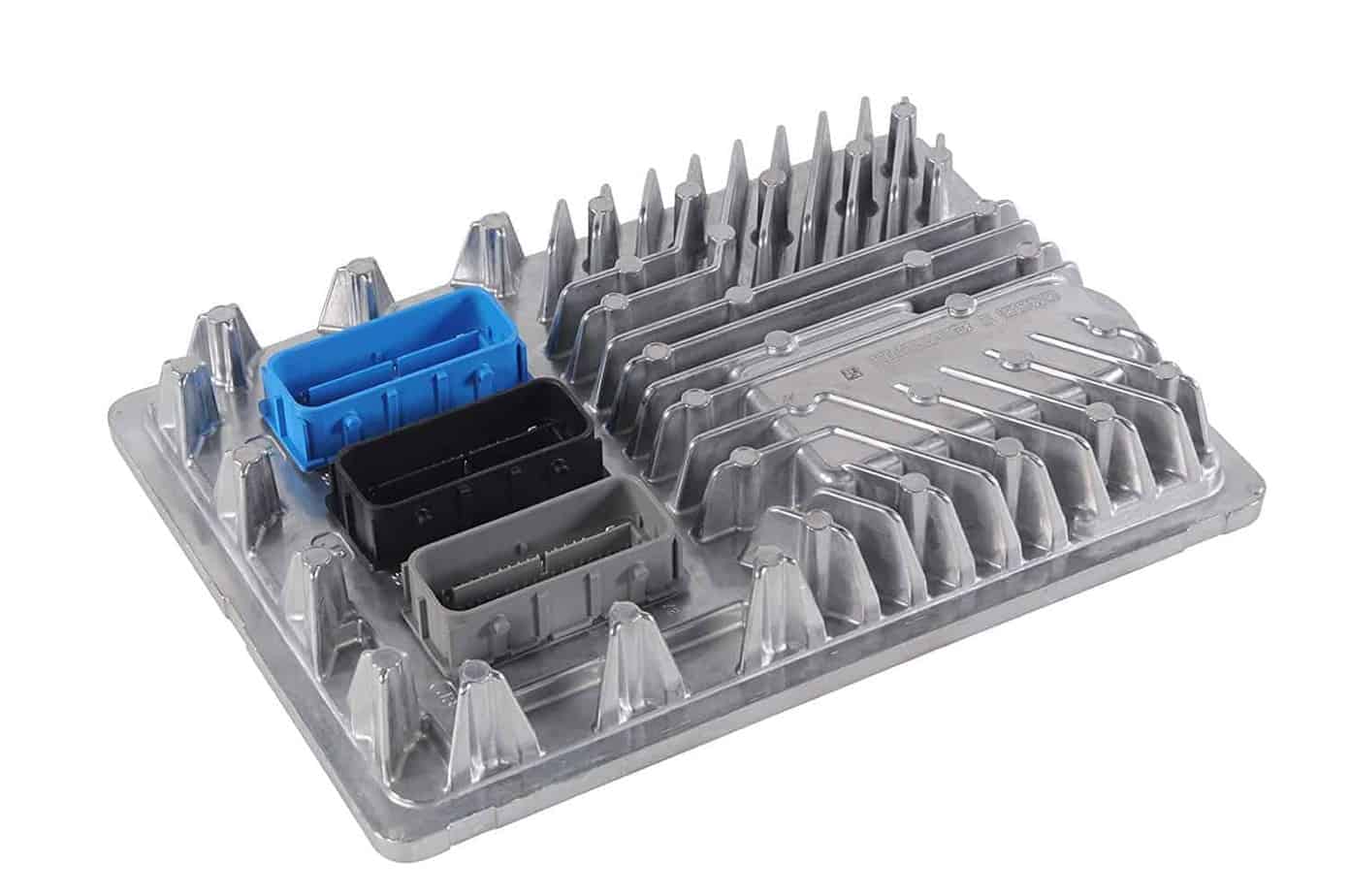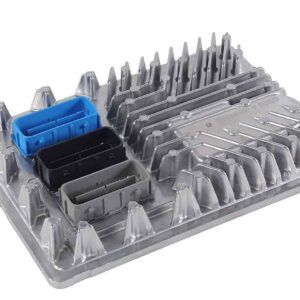Restore Peak Performance to Your GM Truck
Is your Sierra, Silverado, or other GM vehicle acting up? Intermittent stalling, a persistent Check Engine Light, or a frustrating no-start condition can often point directly to a failing Engine Control Module (ECM). As the ‘brain’ of your vehicle’s engine, the ECM is responsible for managing everything from fuel mixture and ignition timing to transmission shifts. When it falters, the symptoms can be unpredictable and difficult to diagnose. This isn’t just an inconvenience; it’s a reliability issue that can leave you stranded.
This direct-fit Engine Control Module is the definitive solution. We take the guesswork and hassle out of the replacement process. Before this module ever ships, we program it specifically to your vehicle using your VIN. This ensures it arrives loaded with the latest factory software and calibrations from GM, tailored to your exact make, model, and options. You get a component that’s ready for the final installation steps, saving you a costly trip to the dealership for programming.
Case Study: A Tricky Diagnosis
I remember a 2017 Silverado 1500 that came into my bay with a complaint of random stalling at stoplights. No consistent codes were stored, just a few generic communication errors that would come and go. We checked fuel pressure, sensors, and wiring harnesses for hours. Everything seemed fine. On a hunch, I monitored the ECM’s internal temperature data while running a heat gun over the module. Sure enough, as the ECM case heated up, the data stream would crash, causing the engine to stall. The internal processor was failing under thermal stress—a classic sign of a dying ECM. Replacing it with a properly programmed module like this one solved the problem instantly.
Common Signs of a Failing ECM
- ✔ The engine cranks but refuses to start.
- ✔ Unexplained stalling or rough idling, especially when warm.
- ✔ A persistent Check Engine Light with codes like P0601 (Internal Control Module Memory Check Sum Error) or P0606 (ECM/PCM Processor Fault).
- ✔ Loss of communication codes (e.g., U0100) with other vehicle modules.
- ✔ Noticeable decrease in fuel economy and engine performance.
- ✔ Failure to pass state emissions testing.
Your Straightforward ECM Installation Guide
Installing your new ECM is a manageable job for a confident DIYer or a quick task for any professional technician. The most critical part is performing the necessary security relearn after installation.
- Safety First: Disconnect the negative terminal from your vehicle’s battery to prevent any electrical shorts.
- Locate the ECM: On most GM trucks like the Sierra and Silverado, the ECM is located in the engine compartment on the driver’s side, near the firewall or fender.
- Disconnect Connectors: Carefully release the locking tabs and unplug the large wiring harness connectors from the old ECM. Inspect them for any corrosion or damage.
- Remove the Old Module: Unbolt the old ECM from its mounting bracket and remove it from the vehicle.
- Install the New Module: Bolt your new, pre-programmed ECM into place. Reconnect the wiring harness connectors, ensuring they click securely into place.
- Reconnect Battery: Reattach the negative battery terminal.
- Perform Relearn Procedures: This is a critical final step. If the vehicle does not start, you must perform a Vehicle Theft Deterrent (VTD) relearn using a compatible scan tool with access to GM’s Tis2web or Techline Connect service. Other procedures like a Crankshaft Variation Relearn may also be required to ensure optimal performance. This is the responsibility of the installer.
Will This Fit My Vehicle?
This module is a direct replacement for part number 12692068 and is also compatible with part numbers 12704476, 12686382, 12674052, 12674472, and 12678815. It is verified to fit the following models:
- 2017 Cadillac Escalade & Escalade ESV
- 2017 Cadillac XTS (3.6L Twin Turbo, VIN 8)
- 2017 Cadillac CTS (6.2L Supercharged or 3.6L Twin Turbo)
- 2017 Cadillac ATS (3.6L, VIN Y)
- 2017 Chevrolet Corvette
- 2017 Chevrolet Tahoe & Suburban 1500
- 2016-2018 Chevrolet Silverado 1500
- 2017 GMC Yukon & Yukon XL 1500
- 2016-2018 GMC Sierra 1500
- 2017-2018 GMC Sierra Denali 1500
Frequently Asked Questions
Why do you need my VIN?
Why do you need my VIN?
Your Vehicle Identification Number (VIN) is essential for us to load the correct, vehicle-specific software and calibrations from GM. This ensures the 2017-2018 Sierra Denali ECM communicates perfectly with your truck’s engine, transmission, and other systems, just as it did from the factory.
What is a ‘theft relearn’ and why do I need to do it?
Why do you need my VIN?
Your Vehicle Identification Number (VIN) is essential for us to load the correct, vehicle-specific software and calibrations from GM. This ensures the 2017-2018 Sierra Denali ECM communicates perfectly with your truck’s engine, transmission, and other systems, just as it did from the factory.
Can I do the theft relearn myself?
Why do you need my VIN?
Your Vehicle Identification Number (VIN) is essential for us to load the correct, vehicle-specific software and calibrations from GM. This ensures the 2017-2018 Sierra Denali ECM communicates perfectly with your truck’s engine, transmission, and other systems, just as it did from the factory.
Is this a new or used part?
Why do you need my VIN?
Your Vehicle Identification Number (VIN) is essential for us to load the correct, vehicle-specific software and calibrations from GM. This ensures the 2017-2018 Sierra Denali ECM communicates perfectly with your truck’s engine, transmission, and other systems, just as it did from the factory.
What if my original part number doesn’t match exactly?
Why do you need my VIN?
Your Vehicle Identification Number (VIN) is essential for us to load the correct, vehicle-specific software and calibrations from GM. This ensures the 2017-2018 Sierra Denali ECM communicates perfectly with your truck’s engine, transmission, and other systems, just as it did from the factory.



